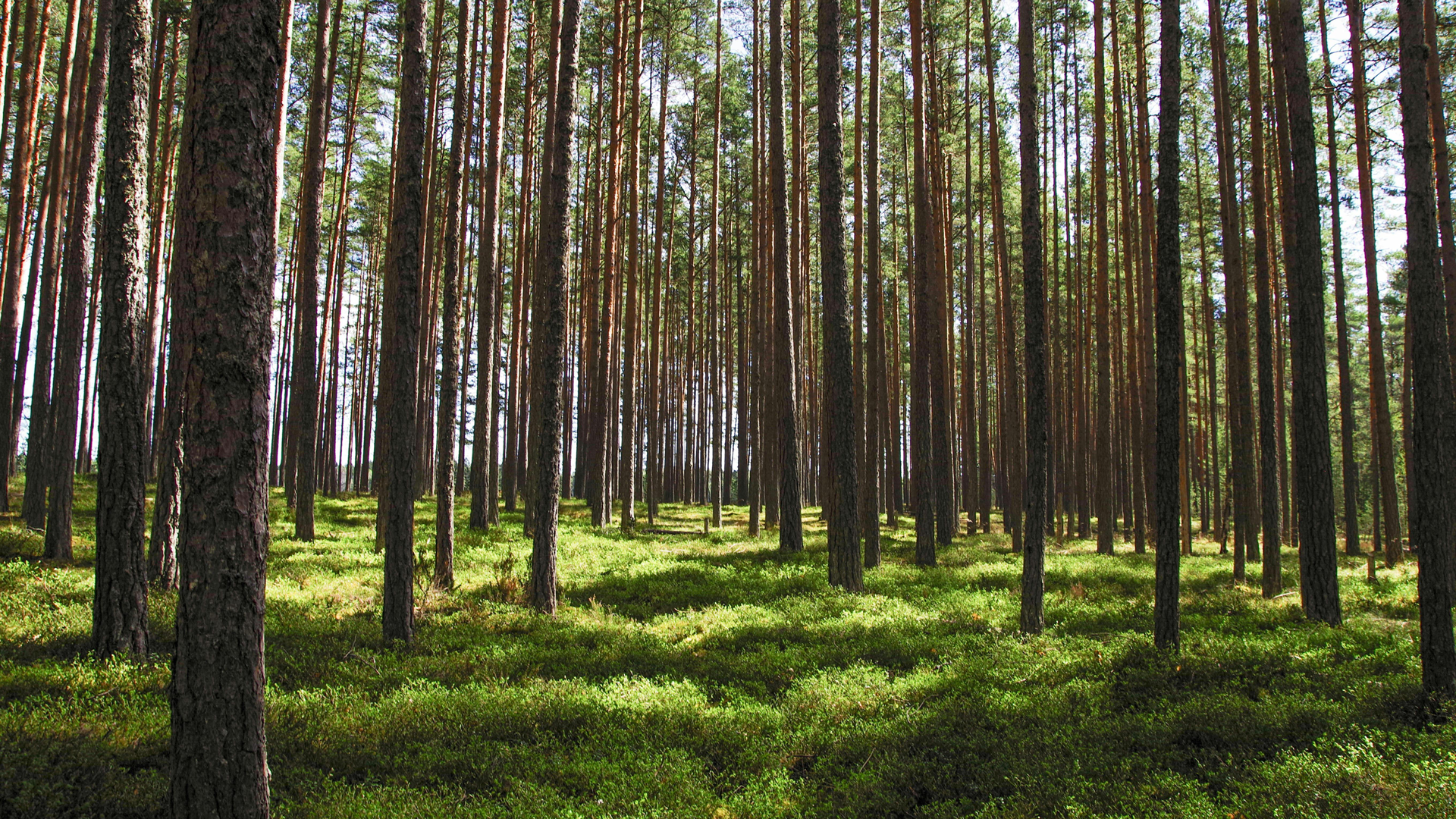Introduction
Synthetic Aperture Radar (SAR) technology has significantly advanced remote sensing applications, especially in forestry. Among the various SAR frequency bands, P-band SAR operates at frequencies around 0.3–1 GHz (wavelengths of approximately 30–100 cm), making it particularly suitable for forest-related studies. Its long wavelength enables deep penetration into vegetation canopies, providing valuable insights into forest structure and key biophysical parameters.
Listen to the Podcast
Why P-band SAR is Ideal for Forestry Applications
P-band SAR has unique advantages due to its ability to penetrate dense vegetation and interact with large-scale forest structures. The following factors make P-band SAR especially useful for forestry:
- Deep Canopy Penetration: Unlike shorter wavelengths (e.g., X-band or C-band), which primarily reflect off the upper canopy, P-band SAR can penetrate through the canopy and interact with tree trunks and large branches. This deeper penetration improves forest structure characterization.
- Sensitivity to Biomass: Since a significant portion of forest biomass is stored in trunks and large branches, P-band SAR provides a more reliable estimate of above-ground biomass (AGB) than higher-frequency SAR systems. Its sensitivity to volume scattering mechanisms enhances biomass assessment accuracy.
- Improved Forest Height Estimation: By utilizing techniques such as Polarimetric SAR Interferometry (PolInSAR) and Tomographic SAR (TomoSAR), P-band SAR data allow for precise forest height measurements. The long wavelength enhances the ability to differentiate between various canopy layers, improving tree height assessment.
- Reduced Impact of Surface Roughness: Shorter wavelengths are more susceptible to ground surface roughness effects, introducing uncertainties in biomass estimation. P-band SAR, however, is less influenced by these variations, leading to more consistent measurements.
Methodology of Biomass Estimation Using P-Band SAR
The estimation of forest biomass using P-band SAR involves several essential steps:
1. Data Acquisition and Preprocessing
- Preprocessing steps include radiometric and geometric corrections to ensure uniformity across datasets.
- Multi-temporal co-registration is applied to align images and reduce spatial inconsistencies.
2. Backscatter Analysis
- P-band SAR signals interact with forest structures, allowing differentiation of forest types and biomass density.
- Polarimetric SAR (PolSAR) analysis (e.g., HH, HV, VV polarization) enhances biomass characterization.
- Machine learning and statistical models link backscatter intensity to biomass estimates.
3. Advanced SAR Techniques: InSAR and TomoSAR
- Interferometric SAR (InSAR): Uses repeat-pass SAR acquisitions to generate forest canopy height models that correlate with biomass.
- Tomographic SAR (TomoSAR): Multi-baseline SAR imaging reconstructs the 3D structure of forests, providing highly accurate biomass distributions.
4. Ground Validation and Model Calibration
- Field measurements (e.g., tree height, diameter, and wood density) provide calibration data.
- LiDAR data offers high-resolution validation for P-band SAR biomass models.
- Data fusion techniques integrate SAR, optical, and LiDAR datasets for improved accuracy.
Key Applications of P-band SAR in Forestry
1. Biomass Estimation
Accurate biomass estimation is essential for understanding forest carbon storage and assessing climate change impacts. P-band SAR is particularly useful for AGB estimation due to its deep canopy penetration and sensitivity to large forest structures. Biomass estimation methods using P-band SAR include:
- Backscatter Analysis: The intensity of P-band backscatter correlates with biomass density, allowing empirical biomass modeling.
- Interferometric SAR (InSAR): Phase differences between SAR acquisitions help estimate vegetation structure and biomass.
- Tomographic SAR (TomoSAR): By processing multiple SAR acquisitions from different angles, TomoSAR generates 3D forest structure maps, improving biomass estimation accuracy.
2. Forest Height Assessment
Forest height is a critical parameter for monitoring forest growth, biodiversity, and carbon sequestration. P-band SAR supports accurate height retrieval using:
- PolInSAR: By analyzing phase differences between polarized SAR signals, PolInSAR estimates forest height effectively.
- TomoSAR: This technique reconstructs vertical forest structure, enabling precise height mapping and improved structural analysis.
Accurate height data contribute to better biomass estimates and ecosystem modeling, supporting sustainable forest management.
Challenges and Considerations
While P-band SAR has many advantages, some challenges must be considered:
- Signal Attenuation: Moisture content in vegetation can attenuate P-band signals, leading to potential retrieval errors.
- Limited Data Availability: Compared to X-band and C-band, P-band SAR data are less commonly available due to regulatory restrictions and fewer operational satellites.
- Calibration and Validation: Ground-based measurements (e.g., LiDAR or field plots) are essential for validating SAR-derived biomass and height estimates, requiring careful calibration efforts.
Future Prospects
The availability of upcoming P-band SAR missions, such as ESA’s BIOMASS mission, will significantly enhance forestry applications. The BIOMASS mission aims to provide global biomass maps, improving forest carbon stock assessments and supporting climate change mitigation efforts. Additionally, integrating P-band SAR with other remote sensing technologies (e.g., LiDAR and optical imagery) will further enhance forest parameter estimation.
Conclusion
P-band SAR is a powerful tool for forestry applications due to its long wavelength, which enables deep canopy penetration and improved sensitivity to biomass and forest height. Using advanced techniques such as PolInSAR and TomoSAR, P-band SAR enhances the accuracy of biomass estimation and forest height assessment. Despite challenges such as data availability and signal attenuation, future missions like ESA’s BIOMASS will expand global forest monitoring capabilities. As SAR technology advances, P-band SAR will continue to be a valuable resource for sustainable forest management, carbon cycle studies, and climate change research.
Expand Your Knowledge – Dive Deeper
Further Reading
- Quegan, S., Le Toan, T., Chave, J., Dall, J., Exbrayat, J.-F., Minh, D. H. T., . . . Papathanassiou, K. (2019). The European Space Agency BIOMASS mission: Measuring forest above-ground biomass from space. Remote Sensing of Environment, 227, 44-60.
- Liu, X., Neigh, C. S., Pardini, M., & Forkel, M. (2024). Estimating forest height and above-ground biomass in tropical forests using P-band TomoSAR and GEDI observations. International Journal of Remote Sensing, 45(9), 3129-3148.



Responses